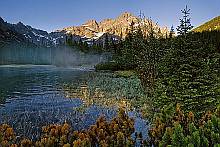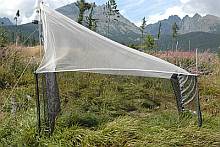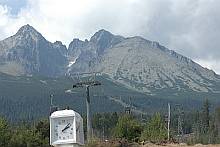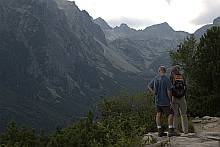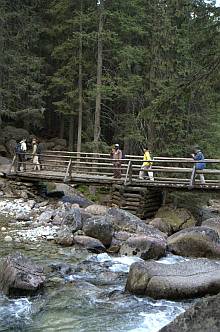Pilgrimage to the mighty Tatra Mountains
|
The Tatra Mountains are the highest part of the Carpathians, one of the most spectacular mountain massifs in Europe.
The Tatras — as the mountains are fondly referred to by locals — form an arc-shaped ring stretching from the Czech Republic in the west, through Slovakia and Poland in the central and northern parts respectively, to Romania in the south east.
Still largely covered by lush native European mountain vegetation, and elegantly rising to more than 2 000 metres above the plains and valleys in the neighbouring regions, the Tatras are indeed magnanimous and beautiful and it comes as no surprise that they are one of the most popular tourist attractions in Central Europe. Dots of ski sites on some of the slopes and a litany of hotels on the foot-slopes complete a picture of an immaculate blend of nature and human creativity.
It was in one of these hotels overlooking the Tatras in Stara Lesna, Slovakia, that long-term ecological research scientists from all corners of the world recently gathered for the annual meeting of the International Long-Term Ecological Research (ILTER) networks.
It provided not only an exquisite but an appropriate setting. A substantial portion of the Tatras was declared a national park as far back as 1948 with the purpose to “preserve the nature of the Tatras with all variety of living and non-living nature”, and the United Nations Education, Scientific and Culture Organisation (UNESCO) declared the Tatras an international biosphere reserve in 1993. Above all, there are a number of active long-term ecological research (LTER) sites within the Tatra National Park.
SAEON was represented at the meeting by its Managing Director, Johan Pauw and Stakeholder Relations Manager, Dr Amani Saidi.
The science part of the meeting went on for two days and culminated in the first field excursion to the Tatras. The excursion took the delegates to some of the ecological monitoring sites, areas where the natural forest was damaged by fire, wind and insect pests, and also to areas where post-damage rehabilitation of the forest is in process. There were scientists on the ground to interact with the delegates at each site of interest.
The conference culminated in yet another field excursion to the Tatras. This time delegates were ferried by cables (locally known as funiculars) from the foot of the mountain to a mountain saddle just below one of the highest peaks of the Tatras. From there we walked for four hours along a winding trail back to the foot of the mountain.
Diverse landscape and vegetation
The trail passes through different landscape features, ecozones and ecotones and it provided an opportunity to witness the diversity in both physical features and biotic communities. Rivers, waterfalls, caves, an ancient crater-lake, cliffs, gorges and ravines were all part of the landscape features witnessed on this long walk. The buttercup (Ranunculus altitatrensis), eyebright (Euphrasia exaristata), primrose (Primula halleri), mountain avens (Dryas octopetala), alpine bearberry (Arcous alpine), creeping spearwort (Ranunculus reptans) and poppy (Papaver tatriculum) were only some of the flora found within the forest landscape of mainly beech, spruce, fir, larch and mountain ash species.
Cameras had a busy afternoon as delegates scrambled to get pictures. The only disappointment was the failure to spot the infamous (according to the Slovaks) brown bear (Ursus arctos) which, together with the wolf (Canis lupus), Eurasian lynx (Lynx lynx) and wild cat (Felis sysvestris) are the big predators of the Tatras.
This final excursion into the Tatras provided a fitting climax to the ILTER pilgrimage, and prompted a couple of delegates to declare that they had found their spiritual home in the Tatras.
Related content : ILTER Network Summit



